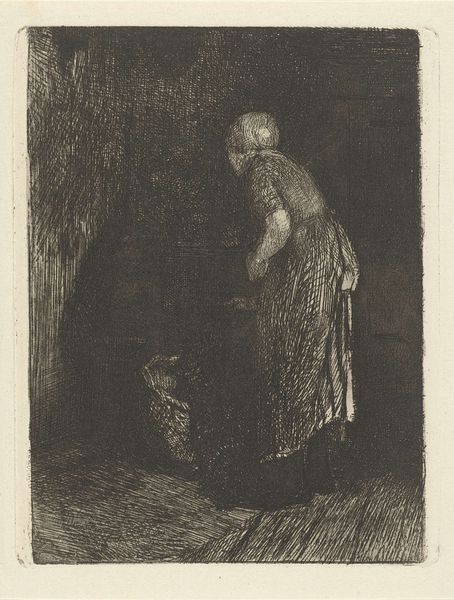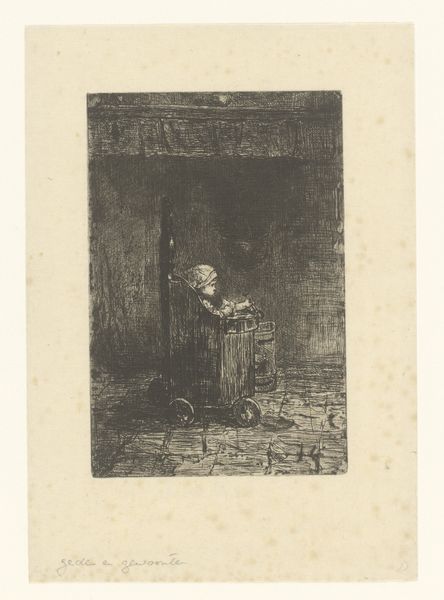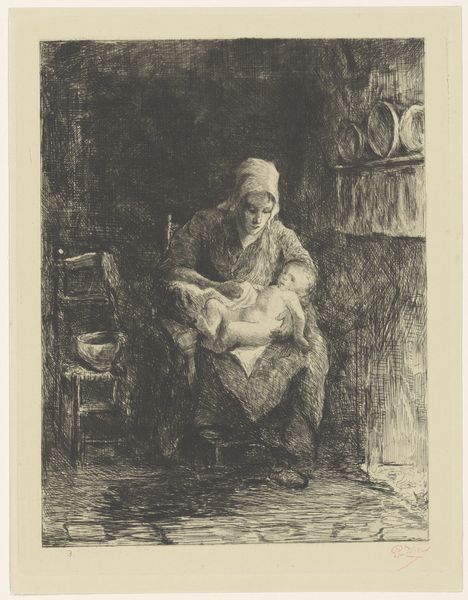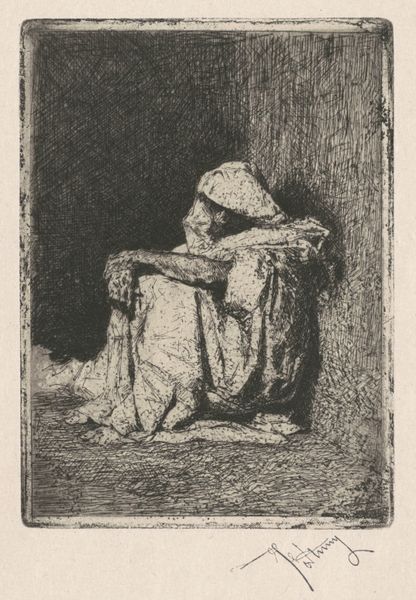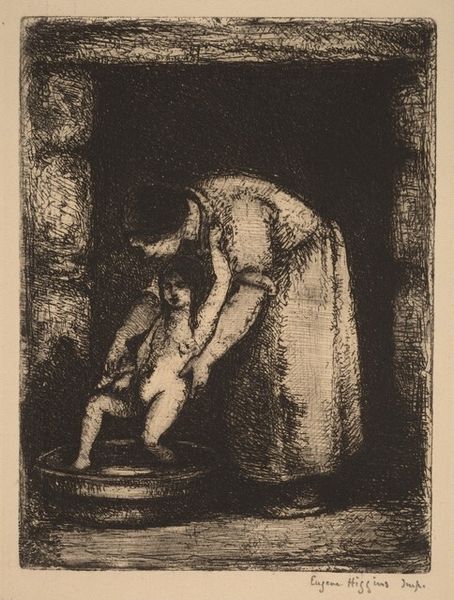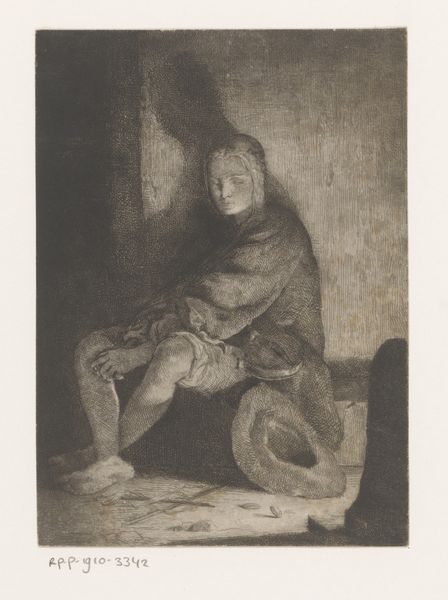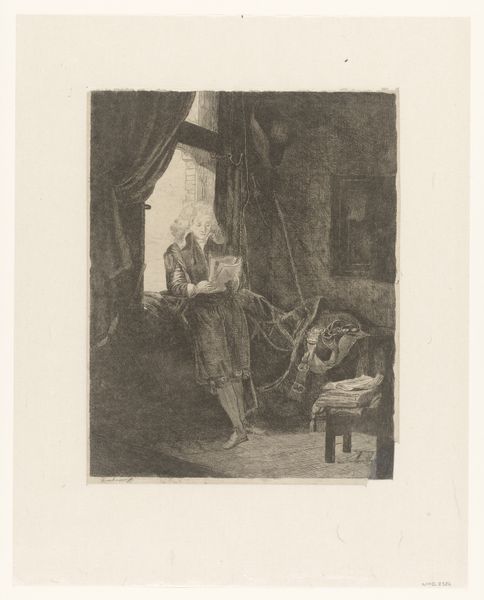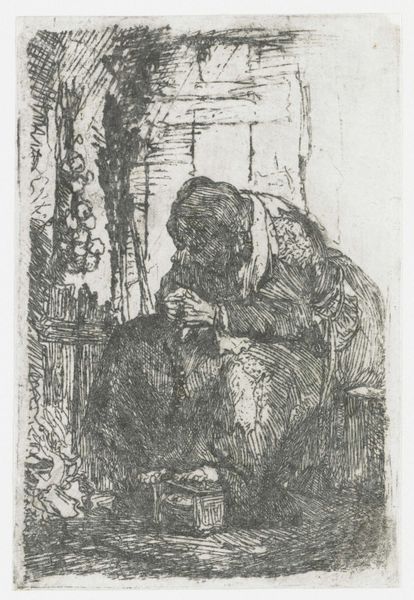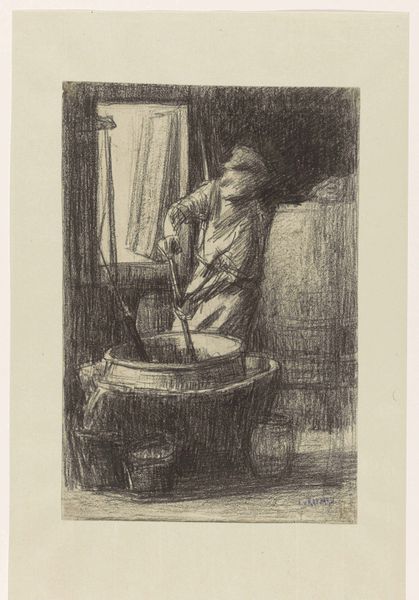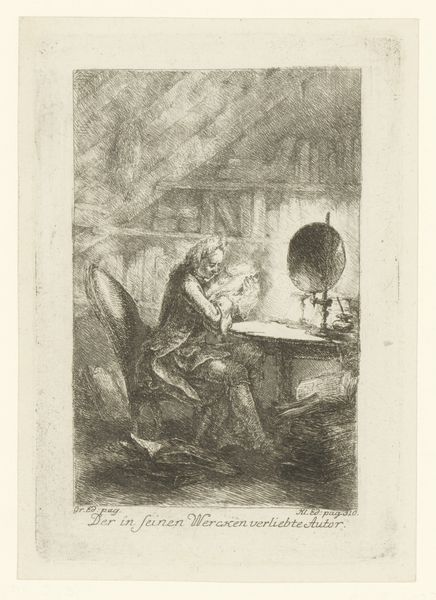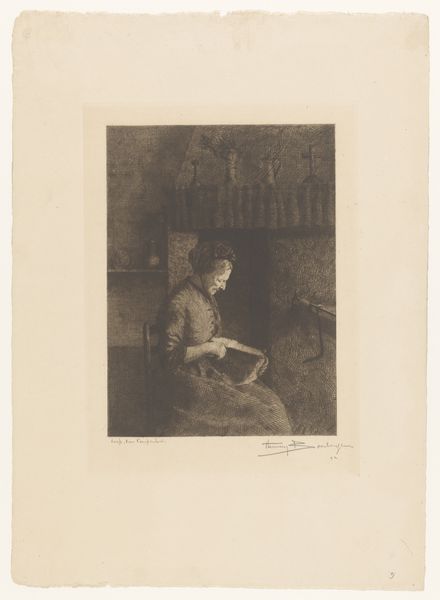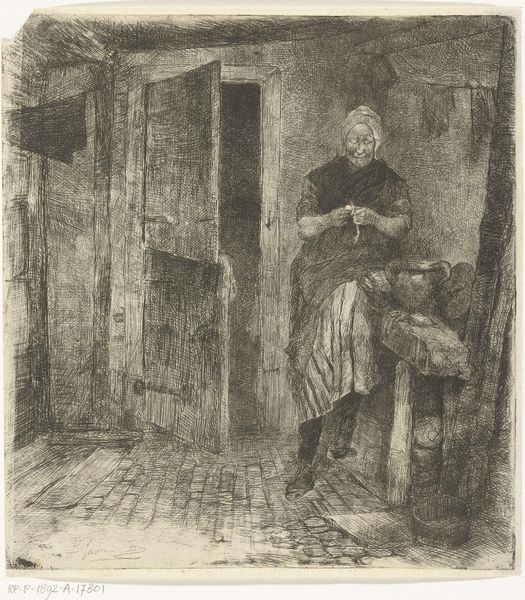
drawing, etching
#
drawing
#
mother
#
etching
#
pencil drawing
#
genre-painting
#
realism
Dimensions: height 121 mm, width 95 mm
Copyright: Rijks Museum: Open Domain
Curator: This etching, titled "Vrouw kijkt in een wieg," or "Woman Looking into a Cradle," was created by Bernardus Johannes Blommers sometime between 1855 and 1885. What are your first thoughts? Editor: The heavy use of line work to build value evokes such a somber, introspective mood. The limited light emphasizes the intimate, private nature of the scene. Curator: Blommers was very much a genre painter focused on domestic life in the Netherlands. The subject, a mother peering into her baby’s cradle, aligns with this common theme, tapping into idealized maternal roles. What kind of social context does it fit into for you? Editor: His expressive rendering reminds me a lot of similar etudes by Millet. However, the emphasis is definitely on a humble simplicity. Notice how Blommers uses the direction of lines on the floorboards to literally ground the figure. The light in the piece definitely leads our eyes toward the center of the scene where the child would be located, making for an immediate point of contact with the composition. Curator: Indeed. This portrayal is telling. It humanizes and sentimentalizes the common worker in the late 19th century, aligning with broader social trends valuing naturalism and relatable, moral subjects. What kind of impact might an image like this have had in that time? Editor: From the formalist perspective, I'd say it serves as an almost classical study of line, tone, and implied texture, giving tangible presence to the domestic. Curator: It's important to remember this image’s wider reach at the time through reproduction in periodicals. Its message would resonate through various levels of society, reinforcing notions about family, domestic labor, and the idealized role of mothers, as something foundational. It encourages a look at Dutch societal ideals of this period. Editor: Seeing it with these things in mind deepens the connection with a subject we can immediately recognize as fundamental and archetypal. The work then moves from being an example of a specific historical era, to feeling like a testament to universally familiar feelings.
Comments
No comments
Be the first to comment and join the conversation on the ultimate creative platform.
